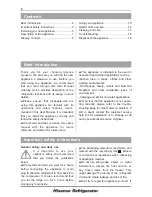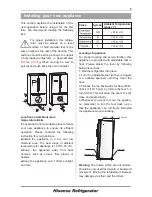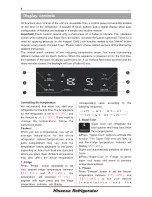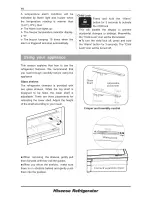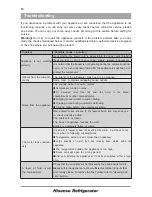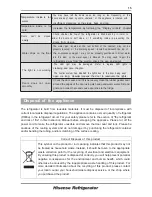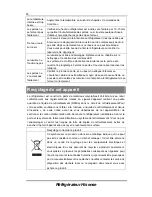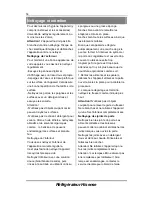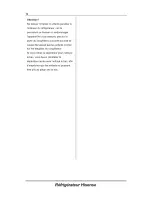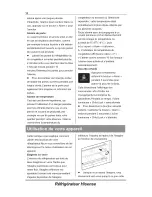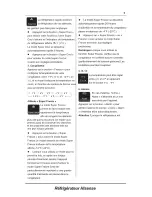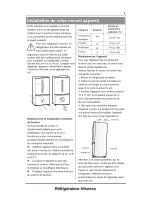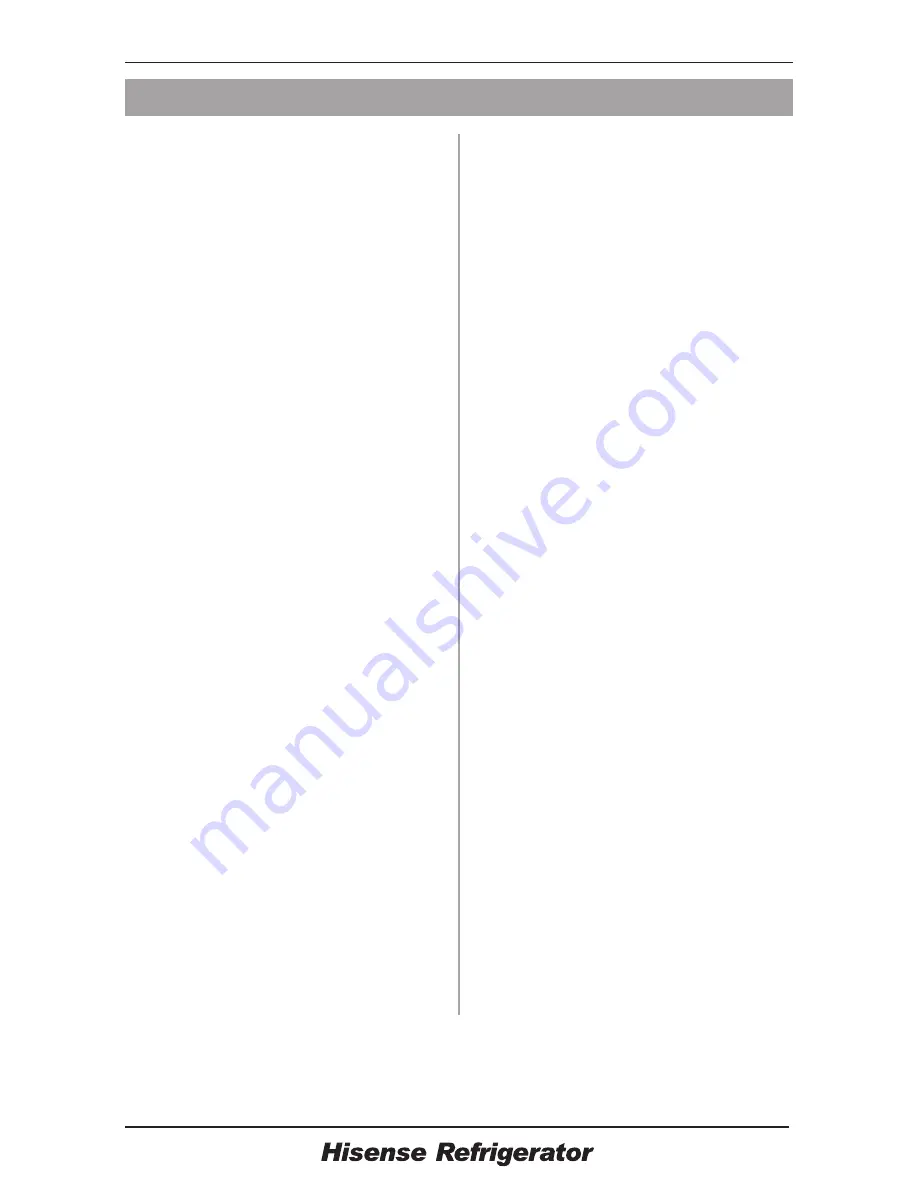
For hygienic reasons the appliance
(including exterior and interior accessories)
should be cleaned regularly at least every
two months.
Caution!
The appliance must not be
connected to the mains during cleaning.
Danger of electrical shock! Before cleaning
switch the appliance off and remove the plug
from the mains socket.
Exterior cleaning
To maintain good appearance of your
appliance, you should clean it regularly.
-Wipe the digital panel and display panel
with a clean, soft cloth.
-Spray water onto the cleaning cloth instead
of spraying directly on the surface of the
appliance. This helps ensure an even
distribution of moisture to the surface.
-Clean the doors, handles and cabinet
surfaces with a mild detergent and then wipe
dry with a soft cloth.
Caution!
-Don't use sharp objects as they are likely to
scratch the surface.
-Don't use Thinner, Car detergent, Clorox,
ethereal oil, abrasive cleansers or organic
solvent such as Benzene for cleaning. They
may damage the surface of the appliance
and may cause fire.
Interior cleaning
●
You should clean the appliance interior
regularly. It will be easier to clean when food
stocks are low. Wipe the inside of the fridge
freezer with a weak solution of bicarbonate
of soda, and then rinse with warm water
using a wrung-out sponge or cloth. Wipe
completely dry before replacing the shelves
and baskets.
Thoroughly dry all surfaces and removable
parts.
Cleaning and care
●
defrosts, a layer of frost may occur on the
freezer compartment's interior walls if the
freezer door is opened frequently or kept
open too long. If the frost is too thick,
choose a time when the supply of food
stocks are low and proceed as follows:
1.Remove existing food and accessories
baskets, unplug the appliance from the
mains power and leave the doors open.
Ventilate the room thoroughly to accelerate
the thawing process.
2.When defrosting is completed, clean your
freezer as described above.
Caution!
Don't use sharp objects to remove
frost from the freezer compartment. Only
after the interior is completely dry should the
appliance be switched back on and plugged
back into the mains socket.
Door seals cleaning
Take care to keep door seals clean. Sticky
food and drinks can cause seals to stick to
the cabinet and tear when you open the
door. Wash seal with a mild detergent and
warm water. Rinse and dry it thoroughly after
cleaning.
Caution!
Only after the door seals are
completely dry should the appliance be
powered on.
Warning!
The LED light must not be replaced by the
user! If the LED light is damaged, contact
the customer helpline for assistance.
Although this appliance automatically
13
Summary of Contents for RF20N6ASE
Page 1: ...RF20N6ASE ...
Page 7: ......
Page 8: ...35 F 36 F 39 F 40 F 47 F 46 F 42 F 41 F 35 1 35 ...
Page 9: ... 7 F 6 F 0 F 1 F 2 F 3 F 4 F 11 F 12 F ...
Page 10: ......
Page 16: ......
Page 21: ......
Page 22: ......
Page 23: ......
Page 24: ...35 7 F 6 F 0 F 1 F 2 F 3 F 4 F 11 F 12 F ...
Page 25: ...35 1 35 F 36 F 39 F 40 F 47 F 46 F 42 F 41 F ...
Page 26: ......
Page 28: ......


